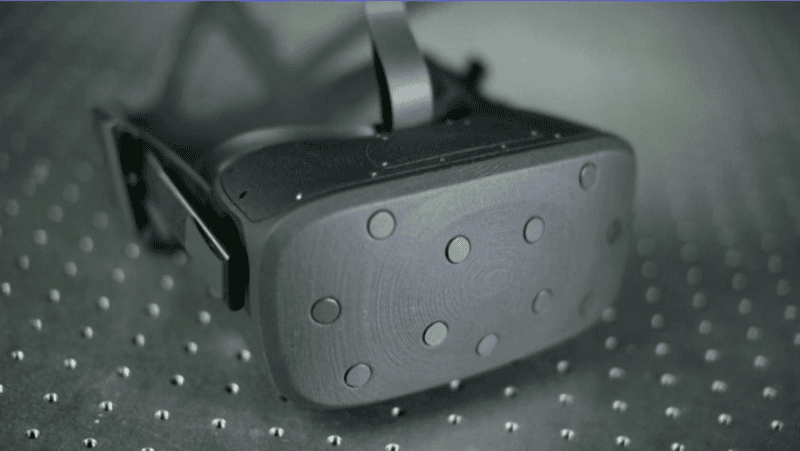
Oculus is only one day into the launch of a new, $199 VR headset, but the company has already begun hinting at the future of its higher-end line of Rift products. Wednesday saw Oculus reveal three interesting new developments for the company’s possible next headset—and the company gave us a visual hint at what it may look like, in the form of a new “Half Dome” prototype.
Half Dome, as shown at the F8 Developer Conference stage on Wednesday, looks almost identical to the existing Oculus Rift, with more noticeable bumps (likely for the sake of positional tracking, but not confirmed). The new stuff is all on the inside, and the most intriguing feature has never been demonstrated in a commercial headset before: a mechanical assembly that quickly moves lenses closer to and farther from a user’s face while they’re using a VR app.
Oculus head of product management Maria Fernandez Guajardo called this a “varifocal” display while showing F8 attendees a video of a Rift-like prototype with its top shell removed. This revealed a bulky, moving-parts system that constantly shifted a headset’s lenses with sub-millimeter precision.
While on stage, Guajardo did not confirm whether or not this system would require an eye-tracking camera inside of such a headset. Instead, she showed a companion video of a VR tester bringing a virtual item closer to her face, at which point the image immediately de-blurred, showing finer discernible details (particularly text). It’s uncertain whether that focusing occurs in the prototype because the headset reads users’ visual focus with a camera or because the software indicates that certain 3D content will appear closer to a user’s face.
After describing issues with limited field-of-view (FOV) in existing Oculus headsets, Guajardo then showed another breakout of the Half Dome headset, revealing a pair of larger, wider lenses. Guajardo advertised these prototype lenses as offering a “140-degree” FOV, which greatly exceeds the existing 110-degree maximum in both Oculus Rift and HTC Vive. Guajardo didn’t describe any other tweaks or changes to this lens design, including whether or not it would continue using the “Fresnel” design of the original Rift, nor did she clarify anything about Half Dome’s screen panel (pixel resolution, OLED vs. LCD, etc.)
Another F8 panel included a brief demonstration that hinted at built-in hand tracking in a future Oculus headset. The demo video showed virtual, 3D-rendered fingers appearing in a VR scene and manipulating objects in virtual space. However, it did not include a real-life video parallel showing, for example, whether the hands in question were in gloves or were otherwise tracked with anything beyond video or infrared capture.
When might we expect these features to land in a consumer-grade VR headset? Oculus chief scientist Michael Abrash gave us a vague hint years ago by offering a “five-year timeline” for the company’s future all the way back at 2016’s F8 keynote. This roadmap included mentions of varifocal lenses, 140-degree FOV, and a “4K by 4K” panel resolution per eye, compared to the current 1200×1080 resolution per eye on both Rift and HTC Vive. Whether that means an eventual Half Dome launch would include a boosted resolution is unclear; that five-year plan could hint at multiple headsets adding up to such features, and it curiously lacks mentions of finger- and eye-tracking or wireless solutions.
Abrash’s roadmap appears to focus primarily on PC-driven VR, as it also includes zero mention of Oculus Santa Cruz, the wireless, fully tracked VR prototype that is still in development.

